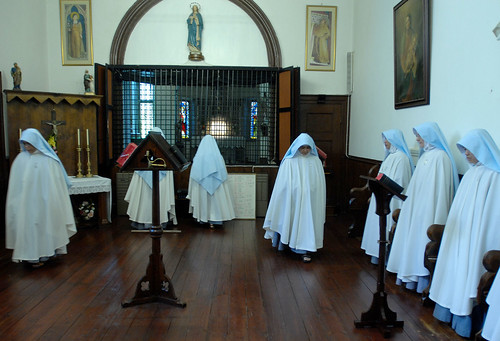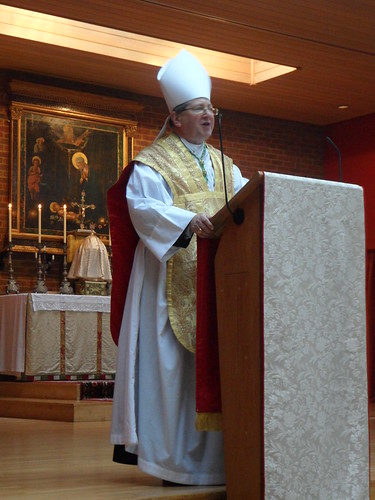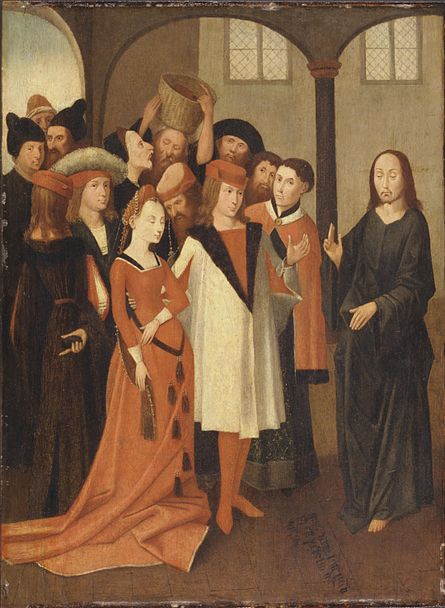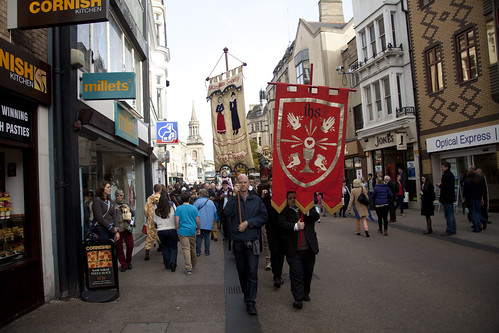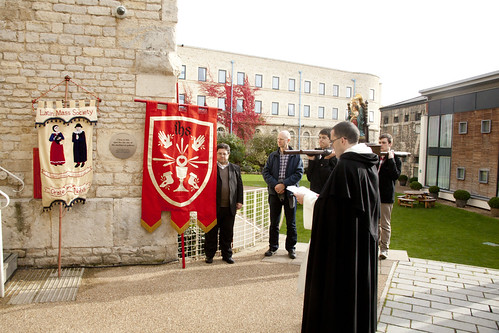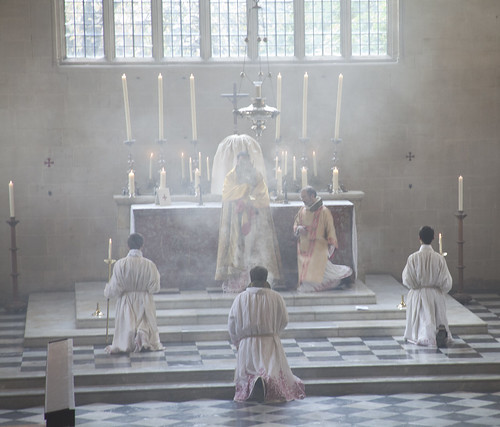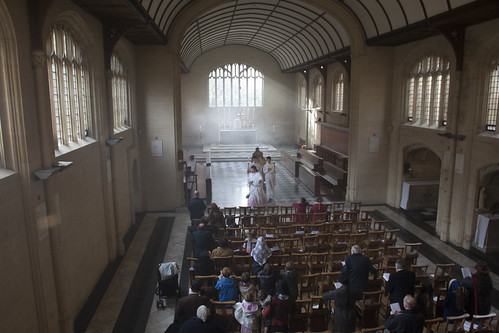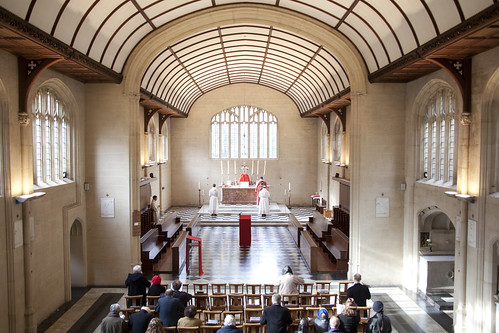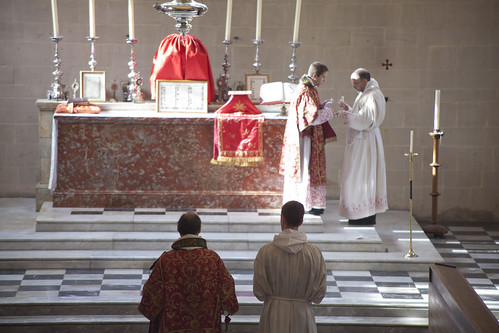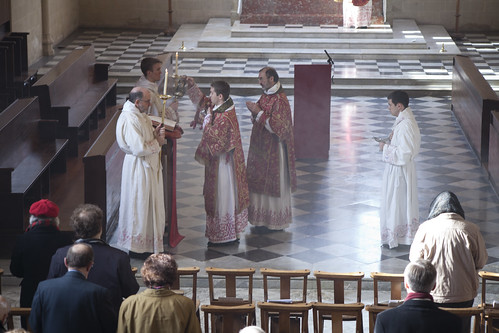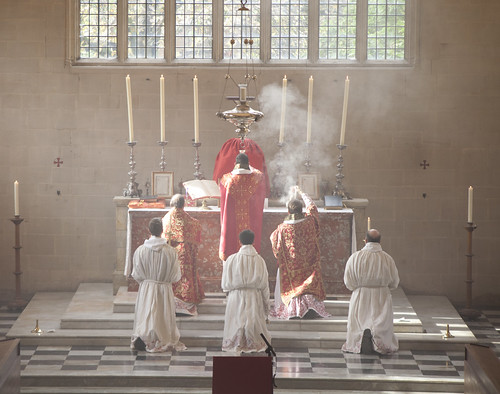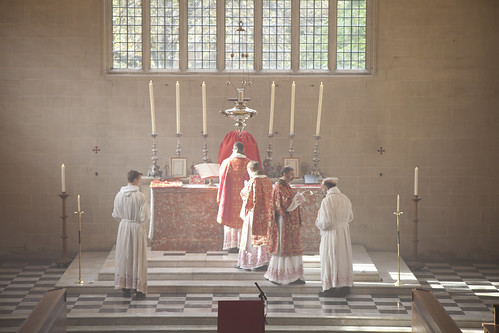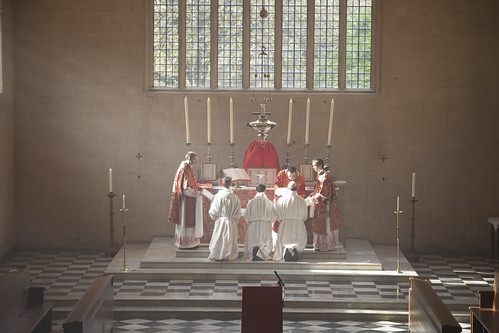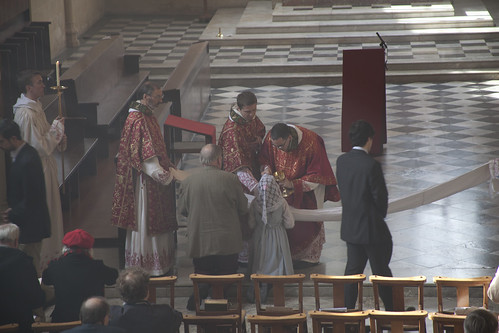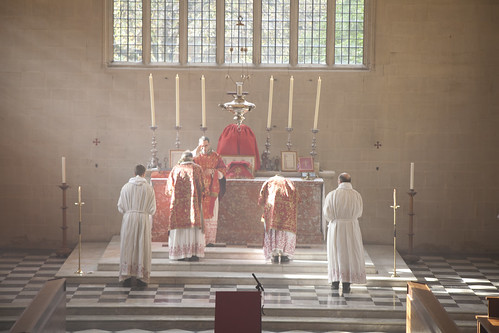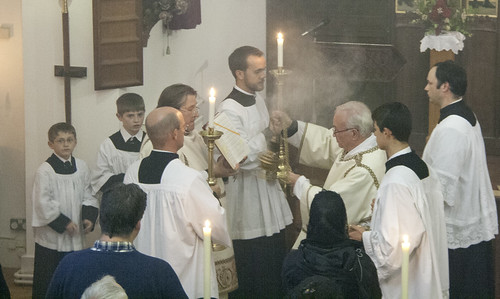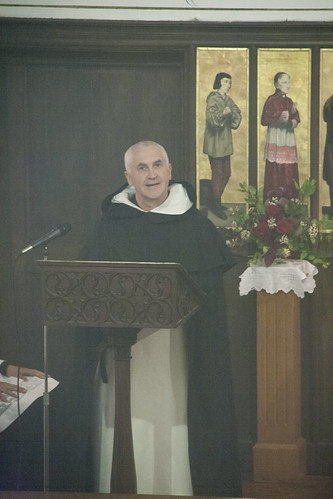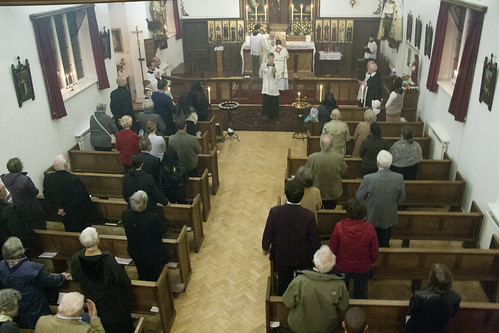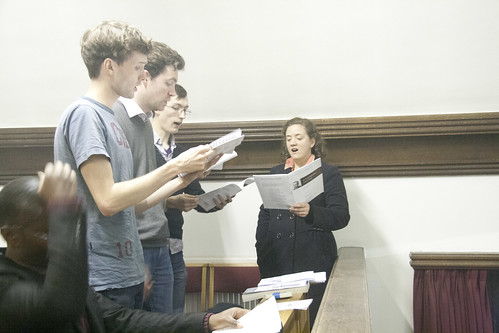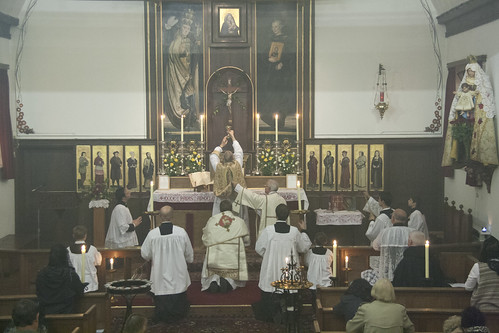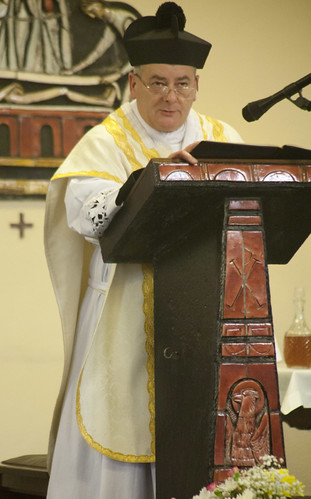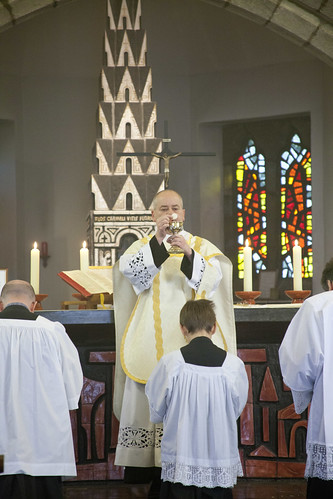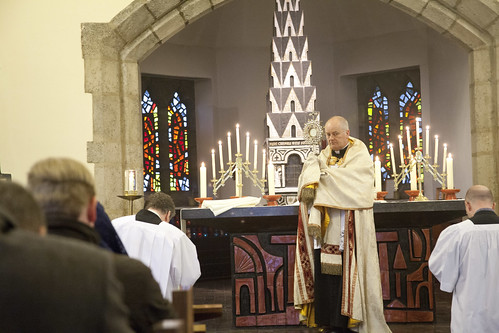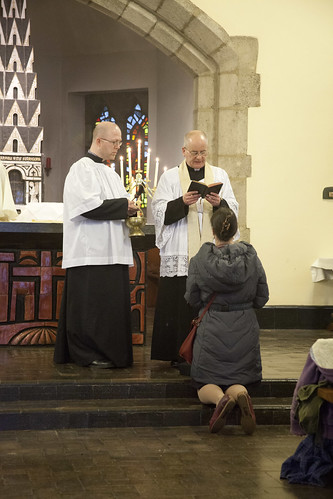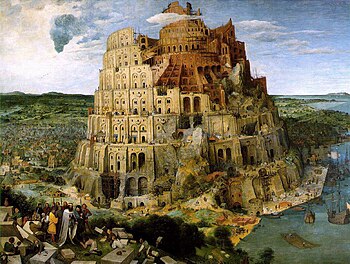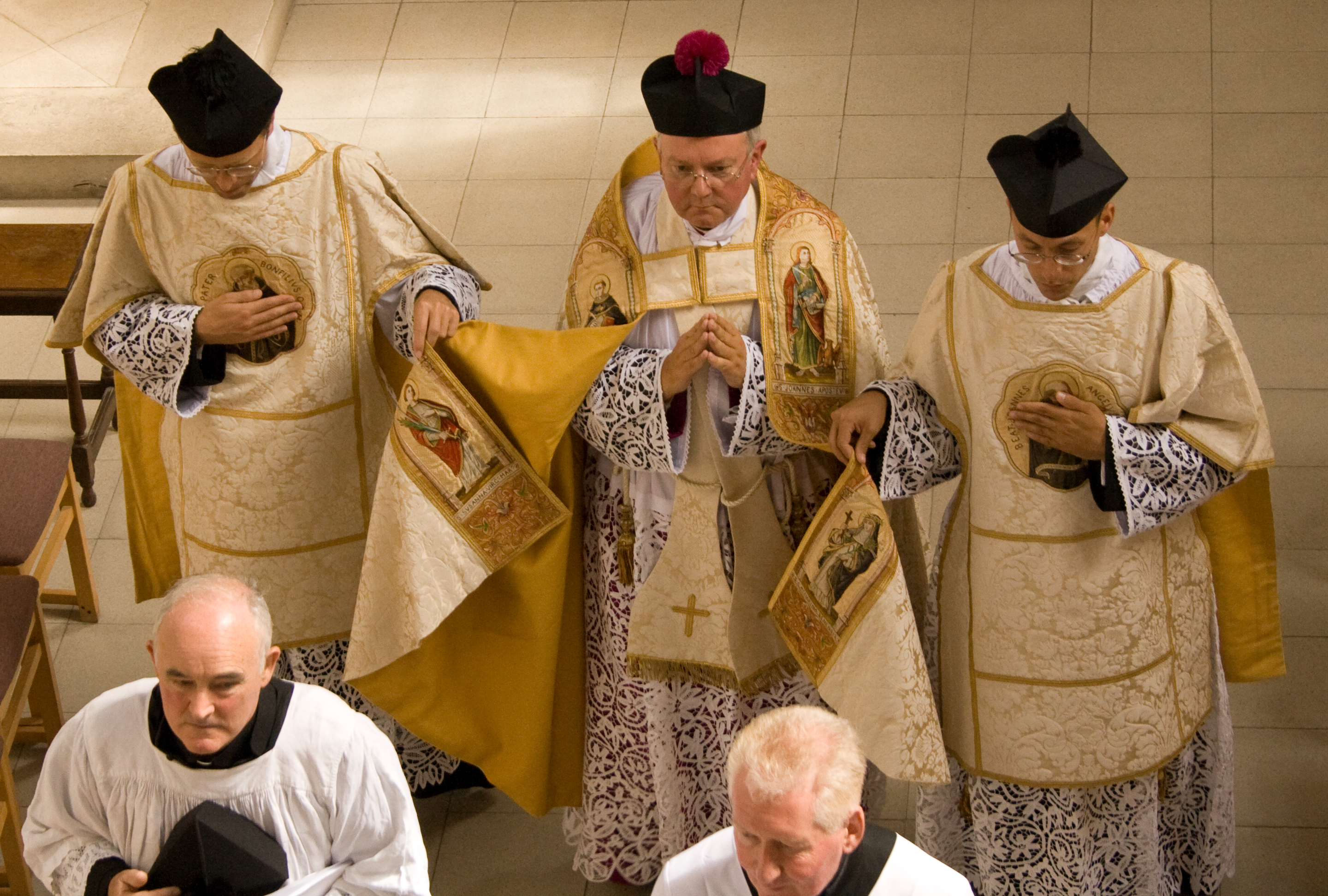 The Diocese of Arundel and Brighton is distributing some booklets to assist week by week parish discussion of the documents of the Second Vatican Council. To accompany the discussion of Sacrosanctum Concilium, the booklet includes a short reflection by Bishop Kieran Conry himself. Here is the whole thing (it's not long: you'll find it on page 37) below are three quotations.
The Diocese of Arundel and Brighton is distributing some booklets to assist week by week parish discussion of the documents of the Second Vatican Council. To accompany the discussion of Sacrosanctum Concilium, the booklet includes a short reflection by Bishop Kieran Conry himself. Here is the whole thing (it's not long: you'll find it on page 37) below are three quotations....over the centuries, and especially after the Protestant Reformation, many of the elements of the Mass had become obscured. Much of this was a consequence of the continued use of Latin, which served to alienate and distance people from the action of the Mass. While the Protestant reformers wanted the scriptures and liturgy to be made accessible to the people in their own language, the Catholic Church rejected this as more or less Protestant heresy, and so the separation of priest and people grew even more marked. The priest had his back to the people and many of the prayers of the Mass were said in silence or in a whisper. The people had to be told that the moment of consecration was approaching to that they could at least see the consecrated host being elevated, and so a bell was rung.
....
When people talk of ‘traditional’ celebration of Mass, they often refer to the rites introduced in the 16th century, after the Protestant Reformation and the Council of Trent. What the Vatican Council has asked us to do is go back and re-discover more authentically where our liturgical traditions begin. It asks us to find again the simple beauty of gifts of bread and wine being brought to the altar from the people; of the people being asked to join in the great prayer of thanksgiving over those gifts, said by the priest, and giving their consent with the great ‘Amen’ – one of the responses that really should be sung – and it asks us to see that the bread is broken before it is shared, as Christ took the bread and broke it.
These passages may lead to misunderstandings, so I thought I'd do a little analysis of them here.
First off, it is initially unclear exactly with Bishop Conry has in mind when he talks about 'rites introduced' after the Reformation and Trent. To understand one must look elsewhere in the document, where he talks about the growth in Low Mass, and the (paradoxical) development of the orchestral Mass, in the post-Tridentine period. It must be these things he has in mind, because as everyone knows the period was one of great stability in the liturgical rubrics and texts, a stability much regretted by liberals, who describe it as 'sclerosis', and would much rather the relatively free and easy liturgical development of the Middle Ages had continued. By contrast, the Roman Missal of 1962 is in essentials identical with that of 1474, a good deal earlier than the Reformation.
Bishop Conry's instinctive liturgical conservatism does him great credit. I agree entirely with him that the spread of Low Mass, from early morning weekday Masses at side altars (which was its role in the Middle Ages, for the most part, since it developed in the 9th Century), to Sunday liturgies, was most regrettable though (as Bishop Conry hints) this was the result of a lack of resources in the 19th and 20th Centuries rather than anyone's liturgical preferences.
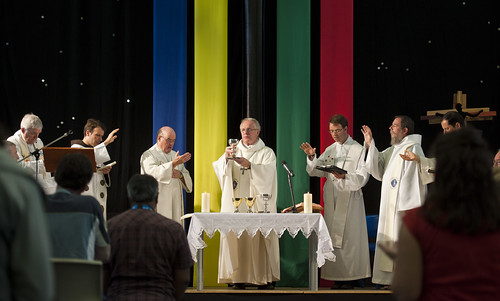
What is rather remarkable is Bishop Conry's critique of vernacular hymns, which, he correctly points out, invaded these Low Masses from paraliturgical devotions, for which they had been composed. If Bishop Conry wants to lead a crusade to replace vernacular hymns at Mass with Gregorian Chant, I'm right behind him. Though it is a little hyperbolic to say 'the old chants had gone': there were still being sung, when Mass was sung, albeit from somewhat simplified 'Medician' editions, the 'Pustet' Ratisbon edition being the officially recognised one from 1870 until the Solesmes restoration of the chant was given official approval with the 1908 Graduale, which led to a huge revival of interest in chant.
Equally obviously, readers should not be misled in reading the first quotation into thinking the the use of Latin, celebration 'ad orientem', the reading of some texts silently or in a low voice, and the use of a bell to indicate the approaching consecration, are peculiar to the post-Tridentine period. Careful attention to what Bishop Conry writes shows that he isn't committing himself to that claim. As the FIUV Position Papers show, Latin has been used in the Western church, regardless of whether the people understood it, since the 4th Century at least; celebration ad orientem is indicated by many (though not all) of the very earliest Christian churches, and was universal, outside the Roman basilicas and churches modelled on them, from the 9th Century; and we hear of prayers being said silently from the reign of the Emperor Justinian. None of these practices can even be described as Medieval: they date from antiquity.
So when Bishop Conry says that that parts of the Mass were 'obscured', and that 'separation of priest and people grew even more marked', he's not talking about 'late' developments, but very early ones. As for the post-Tridentine period, the loss of the Rood Screen made the 'separation' notably less marked. In any case, when we hear him say 'What the Vatican Council has asked us to do is go back and re-discover more authentically where our liturgical traditions begin', it is precisely these kinds of practice which immediately spring to mind. Careful readers will observe that he's not saying that 'obscuring' and 'separating' are bad things: on the contrary, they are clearly necessary to the impact of the rite on the people, since they speak volumes about the mystical significance of what is taking place at the Altar. The FIUV paper on participation quotes the theologian Fr Aidan Nichols:
The notion that the more intelligible the sign, the more effectively it will enter the lives of the faithful is implausible to the sociological imagination. ...a certain opacity is essential to symbolic action in the sociologists’ account…
And that is why the Second Vatican Council called so insistently for Latin in the Mass ('Latin is to be preserved': Sacrosantum Concilium 36.1), and why the 1970 Missal retains both the use of silence (in the so-called 'private prayers of the priest'), and a number of important markers which serve to emphasise the separation between priest and people: the use of vestments, most obviously, but the General Instruction has much to say about the preservation of the sanctuary as a sacred space. Whether by accident or design, I've always felt in 'versus populum' celebrations the Altar seems a barrier between priest and people reminiscent of an executive's desk, and concelebration creates the powerful impression of a clerical elite, a bit like having the grandees on a dais at a meeting or dinner. But that's just me.*
Pope Benedict has (before his election as Pope) more than once called for the restoration of the silent Canon. I'll end this post with a passage from The Spirit of the Liturgy quoted in the FIUV paper on silence.
Anyone who has experienced a church united in the silent praying of the Canon will know what a really filled silence is. It is at once a loud and penetrating cry to God and a Spirit-filled act of prayer. Here everyone does pray the Canon together, albeit in a bond with the special task of the priestly ministry. Here everyone is united, laid hold of by Christ, and led by the Holy Spirit into that common prayer to the Father which is the true sacrifice—the love that reconciles and unites God and the world.
*Though the notorious feminist theologian Elizabeth Schüssler Fiorenza approvingly quotes a friend:
'To witness the concelebration of ten or more men is to witness the demonstration of exclusive male power.'


